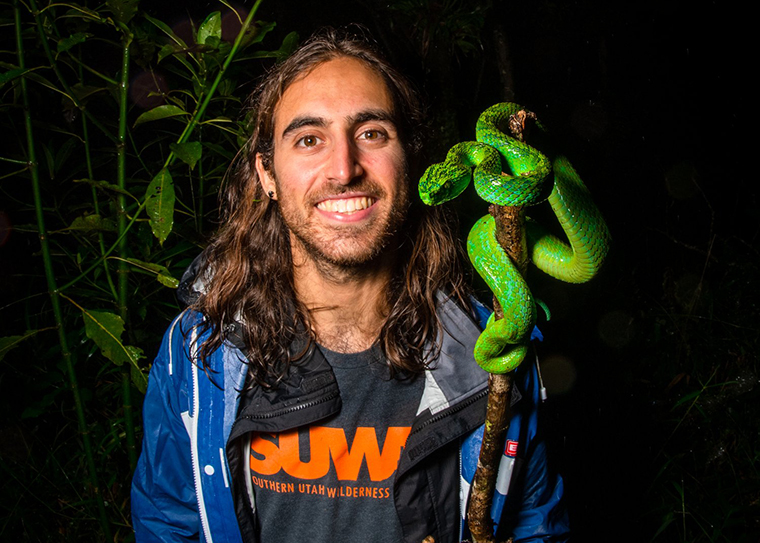WashU grad student working to conserve endangered reptiles, amphibians in Honduras
Tasman Ezra, a graduate student in biology in Arts & Sciences at Washington University in St. Louis, first traveled to Honduras with a high school friend who promised to help him find and photograph an endangered jade palm pit viper (Bothriechis thalassinus).
Inspired by what he saw and the people he met, Ezra founded a conservation organization dedicated to conserving reptiles, amphibians and their habitats
HonduHerp sends experts to primary schools to help young children understand the importance of conserving biodiversity. Members of the organization aim to erode the fear of snakes and reptiles, which is common in communities across the globe. HonduHerp experts also talk with older students and farmers about the differences between venomous and non-venomous snakes.
“Unfortunately, people tend to assume every snake species is venomous or confuse harmless species with venomous ones,” said Ezra, an evolutionary biologist who will join the laboratory of Jonathan Losos, the William H. Danforth Distinguished University Professor in Arts & Sciences. “People are often bitten by venomous snakes because they’re trying to kill them, when the best thing they can do is avoid them altogether.
“We communicate this and educate people on snake characteristics, which also executes our mission of conserving these reptiles and amphibians,” he said. “There are local myths about salamanders being venomous, when, in reality, all salamanders are harmless.”
